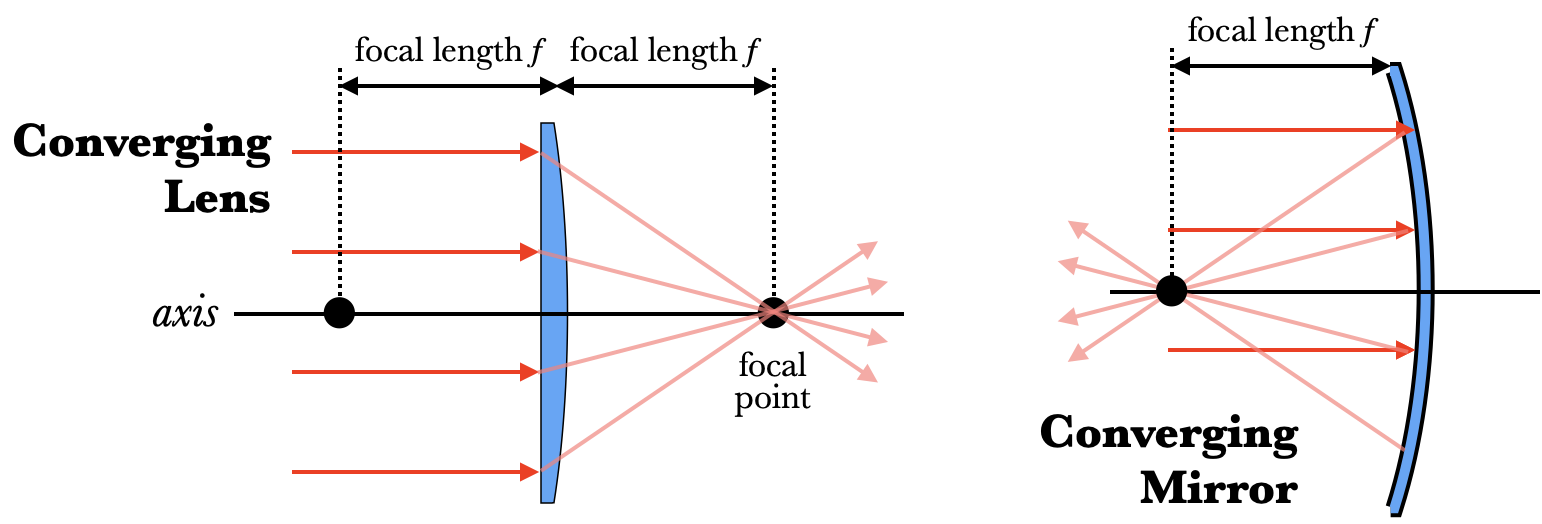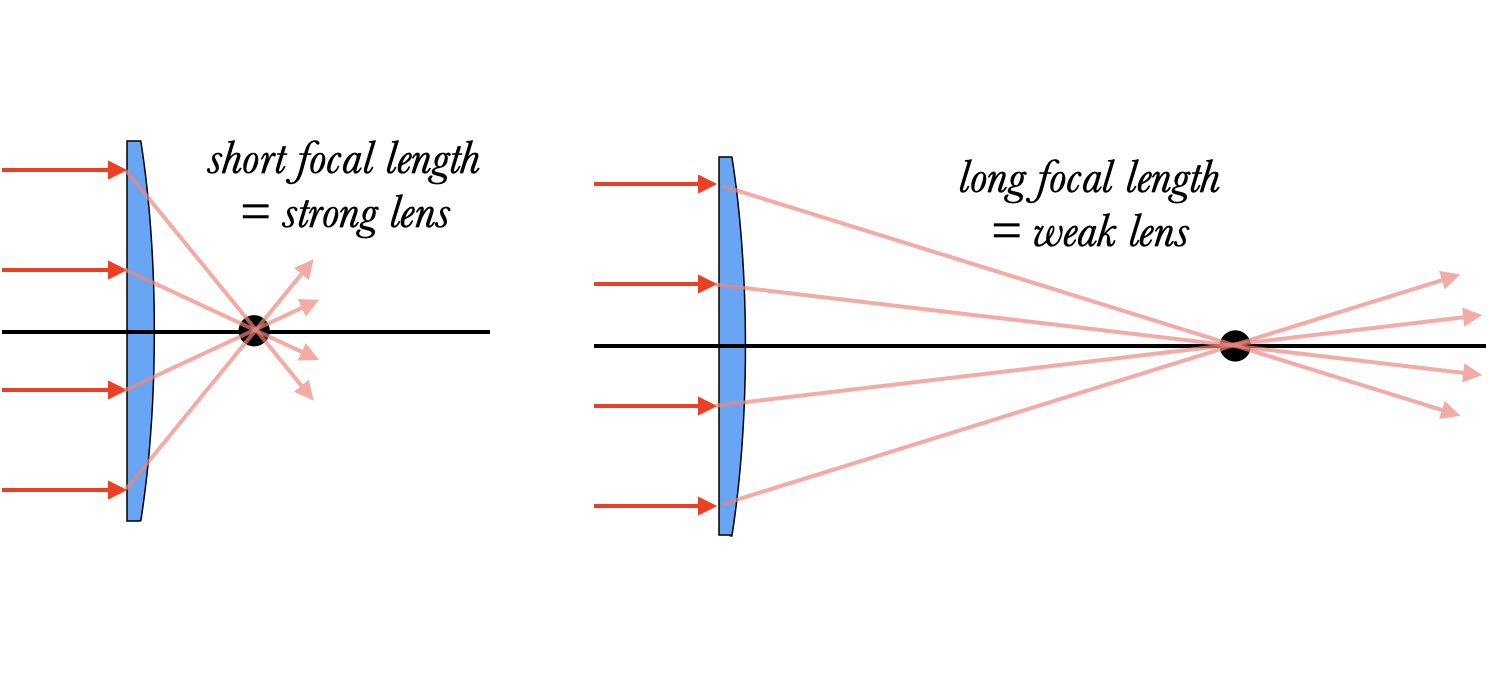6.
Focal Point
Lenses have an axis which is perpendicular to the device, and passes through their center. If light rays parallel to the axis and each other enter a converging lens, the lens bends the rays so that they converge to a point. This point is called the focal point of the lens, and the distance from the lens to the focal point is called the lens's focal length $f$. Lenses have two focal points, one on each side, and they are equally distant from the lens even if the lens is asymmetric. Mirrors only have one focal point, on their concave side, which behaves the same way.
The closer the focal point is, the faster the rays have to converge to come to a point, and the stronger the lens is.
